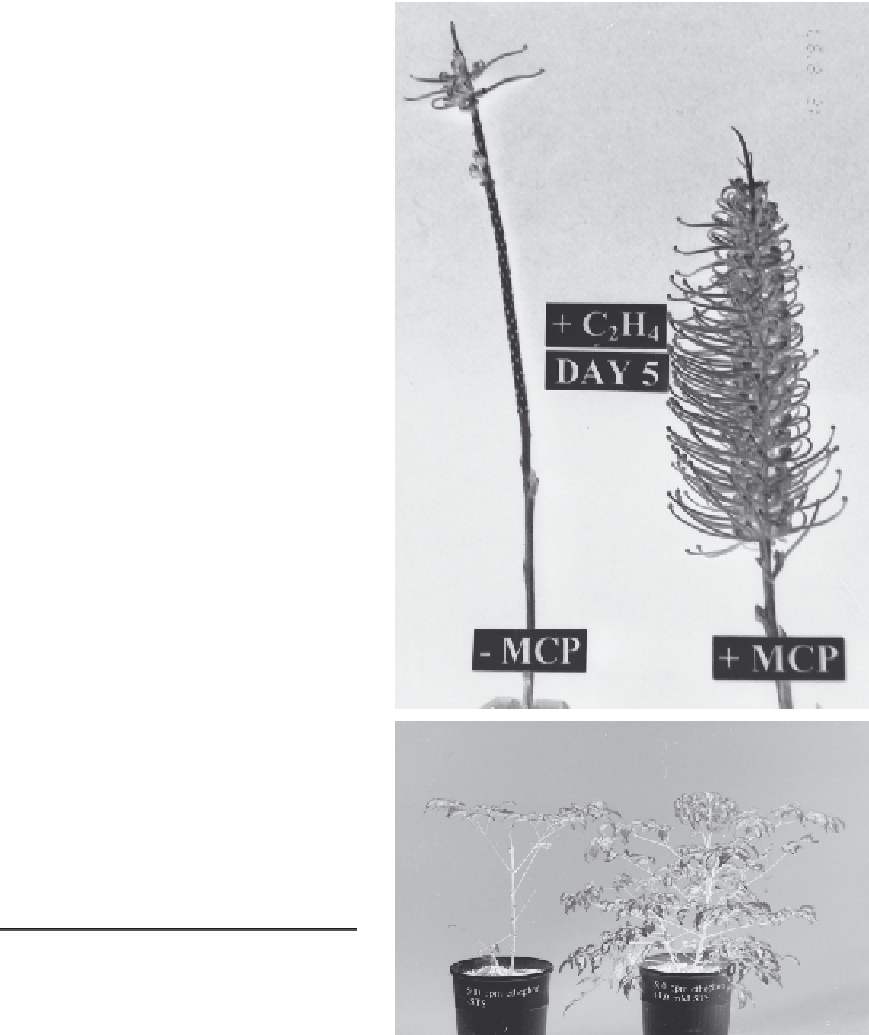Agriculture Reference
In-Depth Information
Table 19.4
Cut Flower Lines Reported to be
Ethylene Sensitive.
Name
Sensitivity
Comment
agapanthus
yes
anenome
yes
anthurium
low
alstroemeria
high
asparagus fern
low
gypsophila
yes
bouvardia
yes
carnation
high
daffodil
high
delphinium
high
euphorbia
high
freesia
high
grevillea
high
gerbera
low
holly
yes
iris (bulbous)
high
lisianthus
low
mistletoe
high
nerine
low
oriental lily
high
orchids
yes (high)/no
varies with genus
rose
yes
varies with cultivar
snapdragon
high
statice
yes
stock
yes
sunflower
low
sweet pea
high
sweet William
yes
tuberose
low
tulip
low
verticordia
yes (high)/no
varies with species
waxflower
yes
varies with
genotype
Source: Nowak and Rudnicki (1990), and Nell and
Reid (2000); see also Woltering and van Doorn (1988),
and van Doorn (2001).
always effective (Table 19.5) (Halevy & Mayak 1981;
Joyce 1989). Gibberellin and cytokinin treatments retarded
alstroemeria and Easter lily leaf chlorosis (Hicklenton
1991; Han 1995), and increased the foliage vase life of
goldenrod (Table 19.6). Pulse treatment of cut
Alstroemeria
cv. Diamond stems with the cytokinin-like compound
thiadiazuron (TDZ) increased leaf longevity from ≤18
days to over 60 days (Ferrante
et al
. 2002). Applied GA
Figure 19.9
Protection against ethylene-induced
abscission conferred by pre-treatments of cut
Grevillea
cv. Honey Gem inflorescences with
1-methylcyclopropene gas (Top image) and potted
Radermacheria
cv. Crystal Doll plants with silver
thiosulphate spray (Bottom image). Controls on left
and treated on right in both images. Reproduced
with permission of the authors and publisher.


































